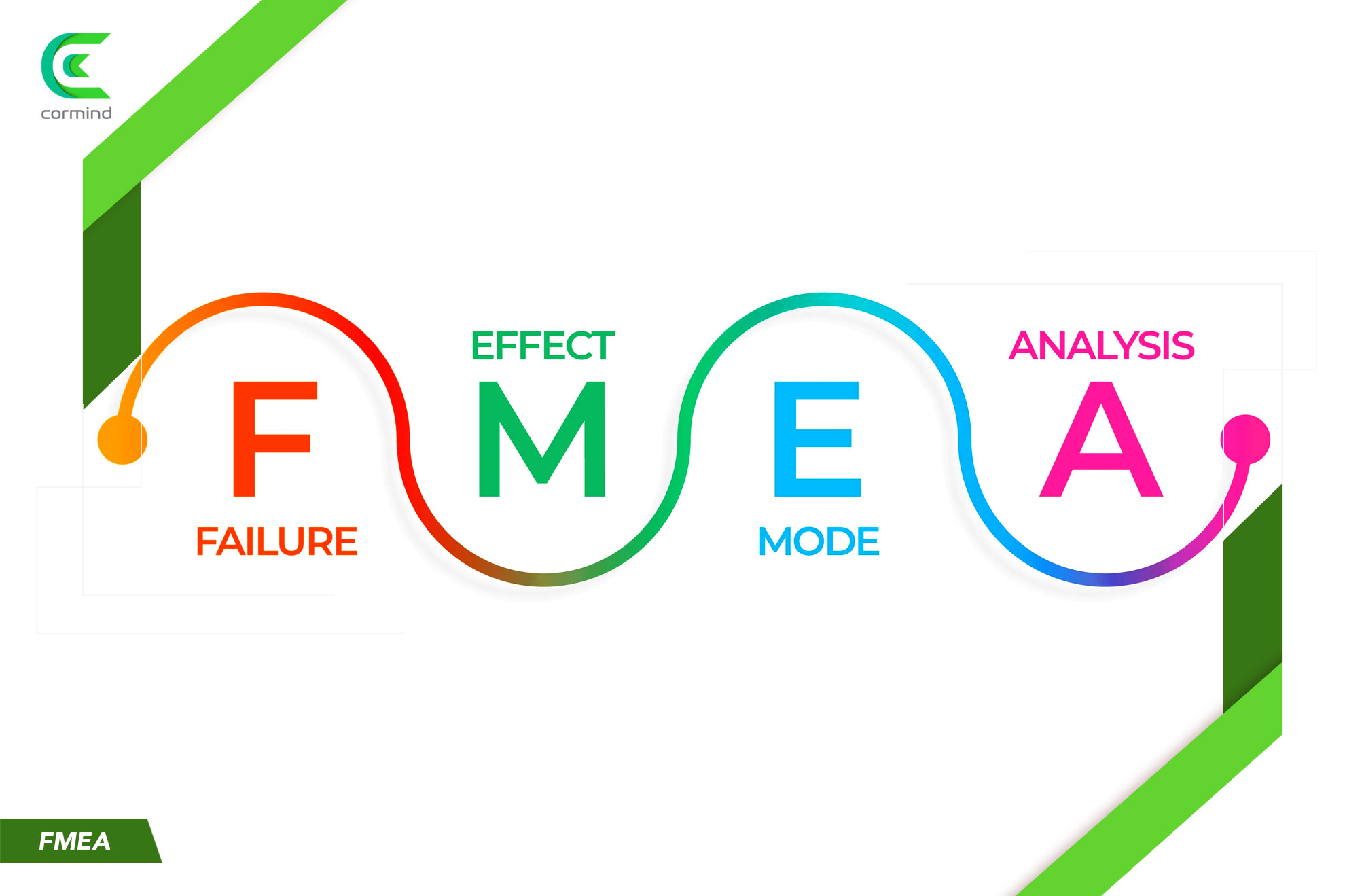FMEA is used in product development and analysis in various industries and is known as “defect mode and effects analysis“. This has been translated into English as “Failure Mode and Effects Analysis“. FMEA technology is used in various industries, primarily the automotive industry, to control the correct and safe application of products and assemblies. This is one of the most important tests to ensure that the product reaches the end user from the factory without any errors. FMEA is widely used to detect errors in production processes, improve production and assembly processes, provide maximum performance, and bring an innovative perspective to the quality control phase.
FMEA Types
FMEA can be applied in a variety of product- and industry-specific ways, resulting in three different types on the market. There are three types of FMEA:
Integrated (MSR) FMEA In this model, which is more project-specific than product-oriented, FMEA is not only product-oriented but also designed to detect environmental problems and prevent unforeseen problems. It detects potential electronic and programmatic malfunctions in your workspace and works with your system to analyze impact and error.
Design FMEA This type of FMEA is widely used in the automotive industry and is also widely preferred by the P&D departments of the brands. You can detect and analyze the features and functions of the products coming off the line and make fault investigations. It is important to send the product to assembly in the best possible way.
Process F.M.E.A. is especially preferred during the assembly phase, where a product analyzes the assembly stages, identifies fault-tolerant details, and offers suggestions for improving the process. Process FMEA focuses on structural analysis elements and disciplines the entire system by offering suggestions for improving production conditions. In this way, the products leaving the line are delivered as soon as possible and with minimum error.
FMEA (Failure Mode and Effects Analysis) Processes
Failure Modes and Effects Analysis aims to digitize your company’s quality control processes by combining industry-leading software with innovative perspectives. It detects the problems that may arise during the manufacturing and assembly stages of your product and offers possible solutions to these problems. Thanks to the risk analysis report, it is possible to improve the situation and verify the design or production process using digital methods.
It establishes digital control mechanisms for your products and optimizes the errors that may occur during the production phase with risk analysis. Thanks to digitally executed error and design processes, production costs are reduced and final product performance is increased.
It plays a role in the development of alternative solutions by identifying the main problems arising from possible errors and defects during the production phase. In addition, to increase customer safety, failure mode, and impact analysis can ensure that products are delivered to consumers with maximum performance and receive positive feedback for future reference.
Let us illustrate the Failure Mode and Effects Analysis process below.
The scope and objectives of the work are determined, and team members gather and learn. The system/process that manages FMEA is tried to be understood. It detects possible faults in system components or phases. The function of each component and stage is defined, and the definition is made for each listed component and level.
Natural conditions are defined in the design to eliminate errors, and team members discuss the following questions:
- Is it possible that there are errors in every part?
- By what mechanism could such an error occur?
- What is the possible impact if an error occurs?
- Are bugs harmful or harmless?
- How are errors detected?
Regarding FMEA, the working group will continue to categorize each identified failure mode by severity. There are several ways to do this. Here are some common methods:
- Modal critical exponent
- Risk level
- Risk priority number
Model significance is a safeguard against the possibility that the considered mode will lead to the failure of the entire system. This applies to device malfunctions where the given formula is defined quantitatively and any malfunction leads to the same result. The level of risk is determined by combining the probability of failure with the results of the failure modes that occur. This is used when different failure modes are different and applicable to a device system or process. The level of risk can be expressed quantitatively, semi-quantitatively, or qualitatively.
FMEA Stages
Phase 1 of FMEA research: A detailed examination of the system to be analyzed using workflow charts and mechanical equipment manuals. The description and functional requirements of the system should be included in a list containing the following information:
- A general description of the system’s function and structure,
- Functional relationships between the elements of the system,
- The acceptable functional operating limits of the system and its components and the limits of the system in each typical operating condition.
- A 100% error-free system is indisputable, but a high level of system reliability can only be achieved through the use of techniques such as backup. Low reliability comes with low cost, but replacement procedures and losses may entail additional costs. More reliability means fewer losses and lower replacement costs. If a fault condition occurs that does not adversely affect the primary system, no further evaluation is required unless the operator is aware of the fault.
- The second phase is to gain a technical understanding of the system’s function and operation and create a block diagram showing the system’s functional flow sequence for further analysis. The block diagram should contain at least the following:
- Part of the system as a main subsystem or device,
- All categorized inputs and outputs and an identification number allowing continuous monitoring of each subsystem,
- All support, optional signaling, and other technical features provide automatic protection against failures.
F.M.E.A. Applications
To fulfill the functions outlined below, the technical implementation of FMEA will be made;
- A systematic review of failure types ensures that any damage caused by errors in the process or service is avoided.
- Identify any defects that may affect the process or service or their functionality and the impact of that failure,
- Identify which of these identified failures has a more serious impact on the operation of the process or service, thereby determining the greatest possible damage and what type of failure could cause it,
- Before assembly, it determines the possibilities of error in the process and their source (design, operation, etc.),
- It provides the necessary test programs to be created by determining the failure rate and type that cannot be obtained from other sources,
- Provides necessary test programs created to experimentally check reliability,
- To determine the possible effects of changes in a product,
- Identify how high-risk components can be secured,
- It defines how to eliminate the bad effects of assembly errors.
F.M.E.A. is used to analyze systems where every component, device, machine, or process part fails. To perform this analysis, it needs detailed information about system factors. For detailed design FMEAs, the element may be at the detailed individual component level; for higher-level system FMEAs, items can be defined at a higher level. Information may include:
- A flow chart or drawing containing the analyzed system, it’s components or process steps,
- understand the function of each step of a system component or process,
- details of the environment and other parameters that may affect the operation,
- understand the consequences of certain failures,
- historical error information, including data and failure rates when applicable.







